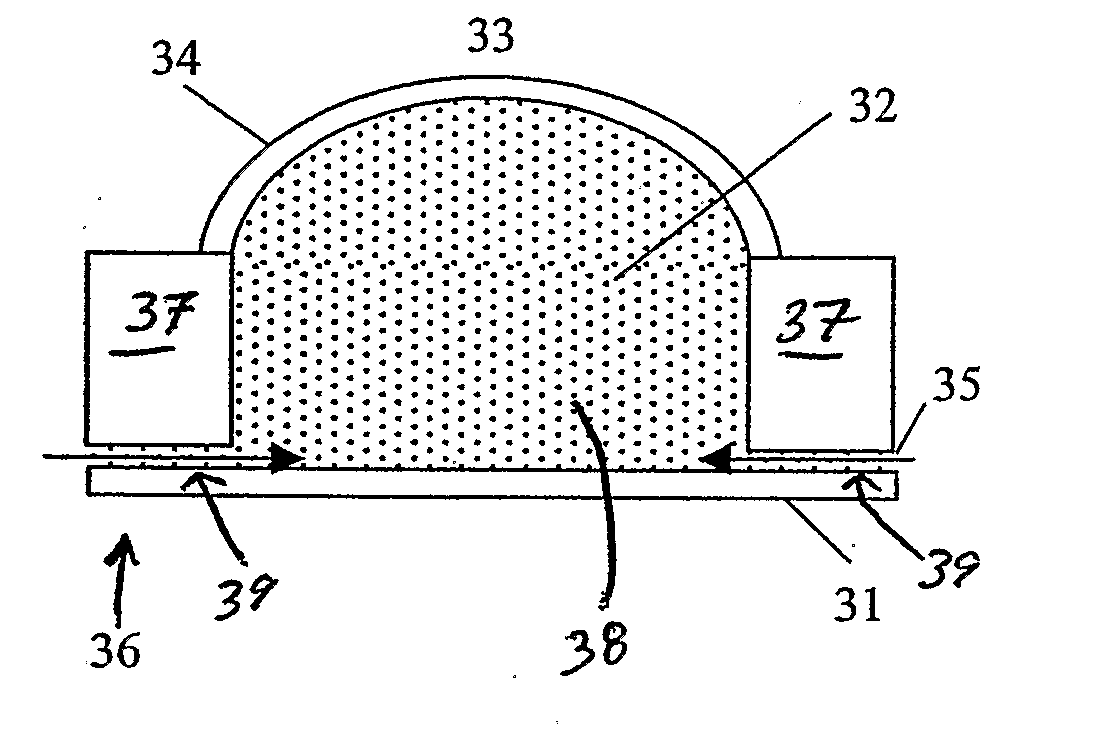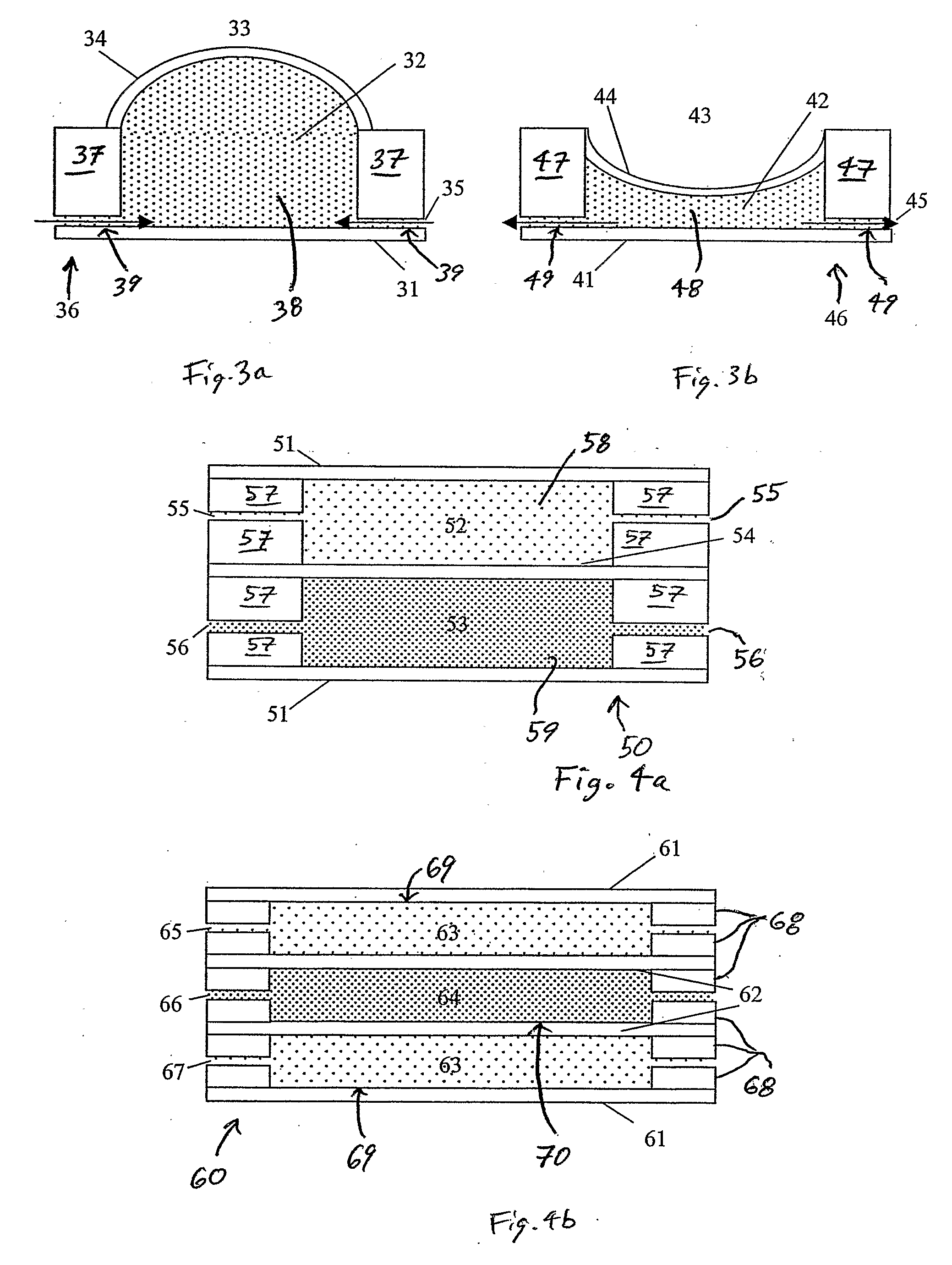Fluidic Adaptive Lens
a technology of adaptive lenses and lenses, applied in the field of optical lenses, can solve the problems of not being able to mass produce eyeglass lenses at low cost, unable to precisely shape lenses according to prescriptions, and unable to meet the requirements of patients, etc., and achieve the effect of adapting optical properties and allowing patients to change the optical properties of lenses
- Summary
- Abstract
- Description
- Claims
- Application Information
AI Technical Summary
Benefits of technology
Problems solved by technology
Method used
Image
Examples
Embodiment Construction
[0035] The present invention relates to the design and construction of fluidic adaptive lenses, as well as the use of one or more such lenses in a variety of environments such as in eyeglasses and zoom lens systems. FIGS. 1-6 generally relate to the design and implementation of fluidic adaptive lenses for use in eyeglasses that are capable of providing dynamically-adjustable vision correction power. FIGS. 7-17 generally relate to the design and implementation of fluid adaptive lenses and combinations of such lenses for use in zoom lens systems that can be incorporated into a variety of devices such as, for example, cameras in cellular phones, and that are capable of providing variable zooming capability without the need for complicated mechanical devices for physically moving multiple lenses toward or away from one another.
[0036] Although FIGS. 1-17 particularly relate to the design and implementation of fluidic adaptive lenses for use in eyeglasses and zoom lens systems, the prese...
PUM
 Login to View More
Login to View More Abstract
Description
Claims
Application Information
 Login to View More
Login to View More - R&D
- Intellectual Property
- Life Sciences
- Materials
- Tech Scout
- Unparalleled Data Quality
- Higher Quality Content
- 60% Fewer Hallucinations
Browse by: Latest US Patents, China's latest patents, Technical Efficacy Thesaurus, Application Domain, Technology Topic, Popular Technical Reports.
© 2025 PatSnap. All rights reserved.Legal|Privacy policy|Modern Slavery Act Transparency Statement|Sitemap|About US| Contact US: help@patsnap.com



